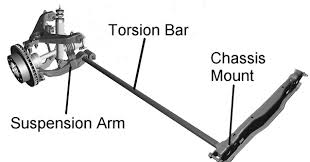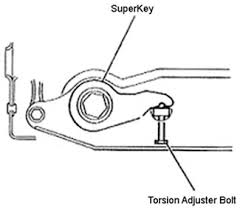There seems to be a common theme happening at the moment, we are getting regular calls and enquiries for suspension and body lifts (Usually 5-6 inches) especially with the younger guys because they have seen a vehicle somewhere usually on the net (In the USA) that looks like a small monster truck and they want their vehicle to look the same. And usually assume it is a cheap exercise
The laws in NZ are very strict on most modifications and require LVV (Low Volume Vehicle) certification; my understanding is that anything up to 50mm of suspension lift doesn’t require LVV certification at present.
However please consult your local WOF station or contact a LVV certifier
Any body lift requires LVV Certification
A body lift is simply lifting the body off of the chassis and placing blocks on top off the mounts; this will affect steering linkages and therefore can be dangerous if not done correctly
Here are a few reasons why suspension lifts aren’t as straight forward as some people seem to think it is
Coil sprung vehicles with a solid front Axle
A lot of older vehicles like Nissan patrols and Toyota Landcruisers have solid front and rear axle with coil springs, these can be relatively straight forward to raise up to 50mm, anything more than this usually requires longer (Adjustable) Panhard rods, brake hoses, some form of caster correction on the front axle and usually adjustable rear trailing (Control) arms due to the excessive driveshaft angles created by big lifts
Torsion bar front suspension
A torsion bar suspension is a general term for any vehicle suspension that uses a torsion bar as its main weight bearing spring. One end of a long metal bar is attached firmly to the vehicle chassis; the opposite end terminates in a lever, the torsion key, and mounted perpendicular to the bar that is attached to a suspension arm, a spindle, or the axle. Vertical motion of the wheel causes the bar to twist around its axis and is resisted by the bar’s torsion resistance. The effective spring rate of the bar is determined by its length, cross section, shape, material, and manufacturing process


As shown above there is only so much adjustment of the torsion bar before the adjuster bolt runs out of adjustment or the suspension arm hits the bump stop, usually can be adjusted 30-40mm and still be working within its limits and not be detrimental to the way the vehicle performs on and off road. In most cases it is recommended to leave 60mm off suspension travel. Taking the torsion bars beyond this limit can also result in excessive and uneven tyre wear and undue stress on CV joints.
Macpherson Strut/Independent front Suspension
Most modern 4wd vehicles, especially Utes have Macpherson strut front suspension and like Torsion bar suspension are generally hard to raise above 40-50mm without compromising handling, tyre wear and safety. There are kits on the market overseas that can raise this type of suspension 4 + inches but contain a new suspension arms, extra long travel struts and a complete new sub frame assembly which lowers the mounting points of the lower control arm/wishbone and other necessary components and again are very expensive and may be illegal to fit in NZ

Talk to Motortech about what your options are to stay safe and legal.





